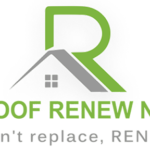Ensuring the longevity and durability of a roof installation is paramount for homeowners and property managers alike. A well-maintained roof not only provides protection from the elements but also contributes to the overall structural integrity of a building. In this guide, we explore the top ways to extend the lifespan of your roof, covering essential practices and proactive measures. From regular inspections to the selection of quality materials, each aspect plays a crucial role in safeguarding against potential damage. This comprehensive approach involves addressing common issues such as water drainage, ventilation, and timely repairs.
Snow and Ice Management
Effective snow and ice control is critical for the lifetime and structural integrity of a roof. Accumulated snow can cause structural stress and damage. Furthermore, the creation of ice dams poses a significant risk, resulting in water backup and infiltration. To reduce these concerns, regular inspections and rapid snow and ice removal are required. Using safe removal procedures, such as snow rakes or professional snow removal services, protects roofing materials and assures the safety of both the roof and its residents.
Pest Control Measures
Implementing effective pest control measures is essential for maintaining a durable and long-lasting roof installation. Recognizing potential threats from pests, such as insects or rodents, is the first step in safeguarding the integrity of the roofing system. Regular inspections for signs of pest activity, including droppings, nests, or gnawed materials, are crucial for early intervention. Employing preventive measures, such as sealing entry points and installing barriers, helps minimize the risk of infestations.
Flashing and Seal Integrity
Maintaining the integrity of flashing and seals is pivotal for a resilient and leak-free roof installation system. Flashing, the protective material around vulnerable areas like vents and chimneys, plays a crucial role in preventing water ingress. Regular inspections should focus on identifying any signs of wear, corrosion, or detachment. Ensuring the integrity of seals, such as those around skylights or vents, is equally vital. Over time, seals may degrade due to exposure to the elements, leading to potential water infiltration.
UV Radiation Protection
Shielding your roof against the harmful effects of UV radiation is crucial for prolonging its lifespan and maintaining structural integrity. UV rays from the sun can lead to gradual deterioration of roofing materials, causing cracks, fading, and reduced durability over time. Understanding these risks is essential for implementing effective protection measures. Opt for UV-resistant roofing materials that can withstand prolonged sun exposure. Additionally, periodic applications of UV-protective coatings provide an extra layer of defense against harmful radiation.
Sustainable Roofing Practices
Embracing sustainable roof installation practices is integral to promoting environmental responsibility and long-term viability. Opting for eco-friendly roofing materials, such as recycled or locally sourced options, minimizes the environmental impact of construction. Green roofing solutions, like vegetative roofs or solar panels, not only enhance energy efficiency but also contribute to biodiversity and air quality improvement. Regular maintenance of these features ensures their optimal functionality, supporting the overall sustainability of the building.
Emergency Preparedness
Establishing robust emergency preparedness measures is paramount for ensuring the resilience of a best roof installation against unforeseen challenges. This involves comprehensive planning for severe weather events, ranging from storms to natural disasters. Property owners should develop and communicate clear emergency protocols, outlining steps for immediate response and repair post-event. Regular drills and simulations help in refining these protocols and ensuring a swift and coordinated reaction during emergencies.
Technology Integration
Incorporating cutting-edge technology into perfect roof installation maintenance practices is pivotal for ensuring longevity and efficiency. Advancements such as smart roofing solutions and monitoring systems provide real-time insights into the condition of the roof, allowing for proactive identification of issues. Sensors and data analytics enable early detection of leaks, insulation gaps, or structural concerns, facilitating prompt intervention. Technology integration also aids in predictive maintenance, optimizing repair schedules based on data-driven assessments.
Post-Storm Assessments
After the storm has passed, conducting thorough post-storm assessments is crucial for understanding the extent of the damage and initiating effective recovery efforts. Teams should prioritize safety while inspecting infrastructure, homes, and natural surroundings. Documenting damages with photos and notes is essential for accurate insurance claims and future preparedness. Assessments should encompass power lines, roadways, and public facilities, ensuring swift restoration of essential services.
In Short
In Short, adopting proactive measures is paramount for ensuring the longevity of roof installations. Regular inspections, prompt repairs, and routine maintenance form a trifecta of essential practices. Cleaning gutters, removing debris, and addressing minor issues promptly prevent larger, costly problems down the line. Utilizing high-quality materials and professional installation services sets the foundation for a durable roof. Adequate ventilation and insulation contribute to climate control, enhancing the structure’s overall resilience. Engaging in seasonal checks and addressing weather-related wear and tear safeguards against potential damage.






